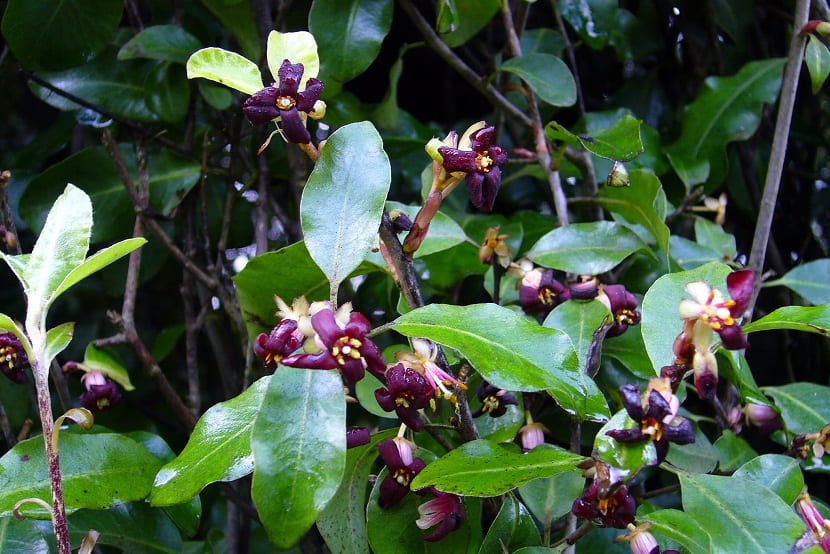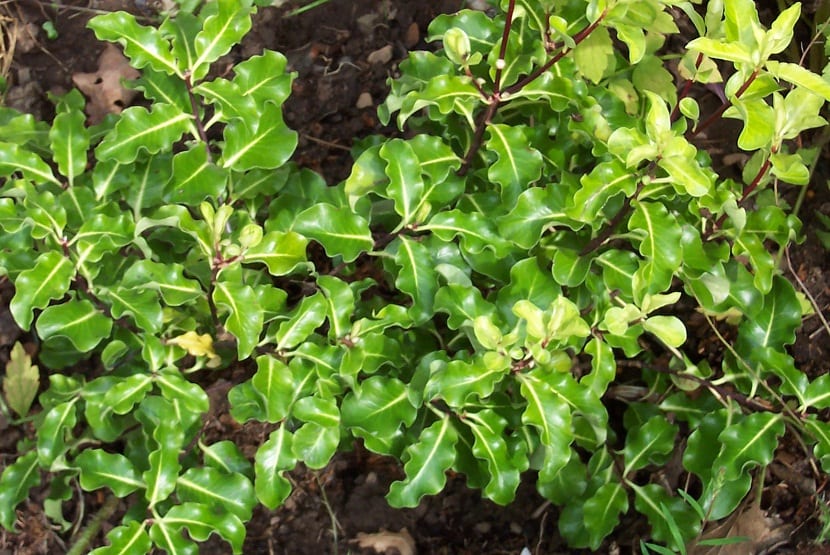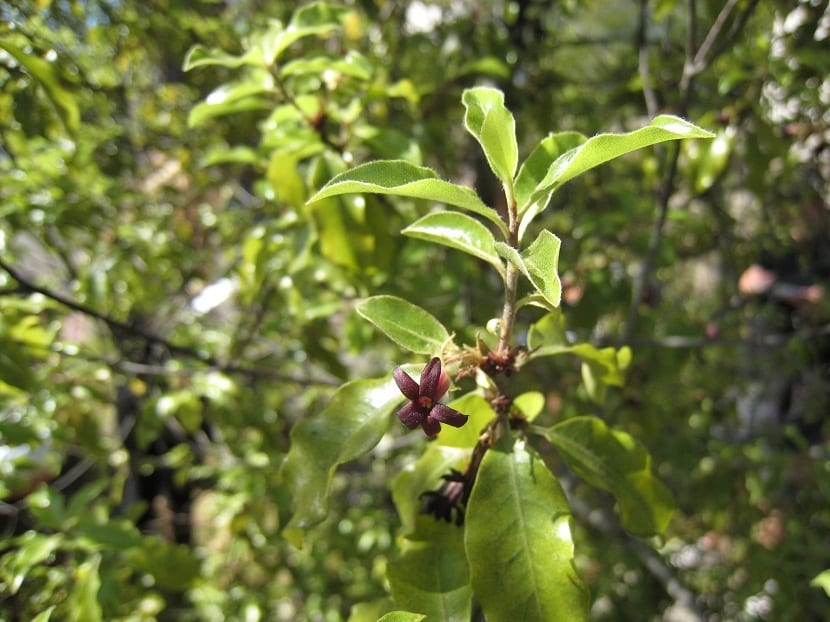
Among the latests Moravia's compositions ornamental plants which can be accessed to sow with these characteristics is the Pittosporum tenuifolium.
This shrub serves as a fence, is easy to prune and also provides a landscape look to the exterior spaces and gardens of the home, therefore it is ideal both as an ornamental plant, as a natural fencing.
Features

The wispy-leaved Pitosporo is a plant with very thin, delicate leaves that are not high-growing.
This kills of the Pittosporaceae family It has more than 200 species from Africa, Asia and Oceania. With their beautiful leaves and delicate flowers they make the perfect outdoor setting.
This shrub can be found about 900 meters above sea level.
The shape of this plant is very striking for its small leaves and delicate flowers. Its size is small, it hardly reaches two meters in height. Its stems are black and the evergreen leaves of the foliage can be green with silver tones or jasper and lighter green.
The size of the leaves is about seven centimeters long and they have a wavy shape. While young, the plants are pyramid-shaped, although as they mature they become round. During the night hours they give off a strong perfume similar to the smell of honey.
The flowers appear in spring and in groups, they have a star shape and are made up of five petals and sepals with a diameter of one centimeter. The color of the flowers ranges from purple to dark reddish, after they turn into a green fruit that turns black at the end of the summer.
Origin and provenance of the wispy-leaved Pitosporo
El Pittosporum tenuifolium it is a bush type plant native to the tropics of Australia and New Zealand.
The origin of the name "Pittosporum”Comes from the Greek and means sticky seed. The reason is that the seeds of this plant are covered with a viscous and white element similar to a resin. "tenuifolium”Is the Latinism used to characterize the thin flowers that the plant has.
This plant is also widely used in Chilean and European gardening where it has been widely accepted to form beautiful natural fences. In Maori culture the plant is popularly known as kohukohu or kohuhu, although they also know it by the name of nigricans due to the blackness of its stems.
Cultivation, care and general recommendations

The cultivation of this shrub is done with a purely ornamental purpose, since it is ideal for this. In fact they are great for topiary art (figures with vegetation). Because they are from tropical climates, the ideal is to sow them in warm temperatures and their sowing can be done by means of seeds or by stake.
Sowing with seeds is done by placing them in hot water for a short period of time, this way the dormancy will be broken and they will germinate quickly. This should be done during the spring season. On the other hand, and by stake, it is sown during the summer, choosing the most woody ones and planting them in a preferably humid soil so that it takes root.
The ideal place for the placement of this shrub should be sunny and the soil kept moist, but not with excessive water, since we are in danger of their leaves turning yellow. It can be pruned very easily and has no problems with the intensity of frosts, as long as they are not very extensive.
For the compost it is preferable to use one that contains organic matter and preferably apply in late winter. In early spring it is necessary to use a slow-acting liquid fertilizer.
As for pests, if humidity is not exceeded there will be no problems with them. If on the contrary there would be an excess of water we run the risk that aphids may appear, although this is easily removed with a chemical or natural bactericide.
It is advisable to protect the plant in winter with plastic wrap or leaves at the base of the plant, especially if it is young. A very important recommendation that should not be forgotten is that this plant is toxic if ingested, so it is necessary to prevent children in particular from coming into contact with it.